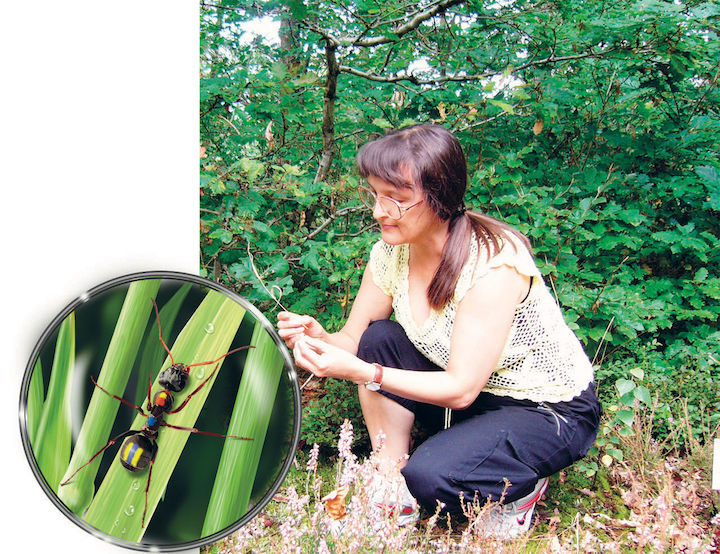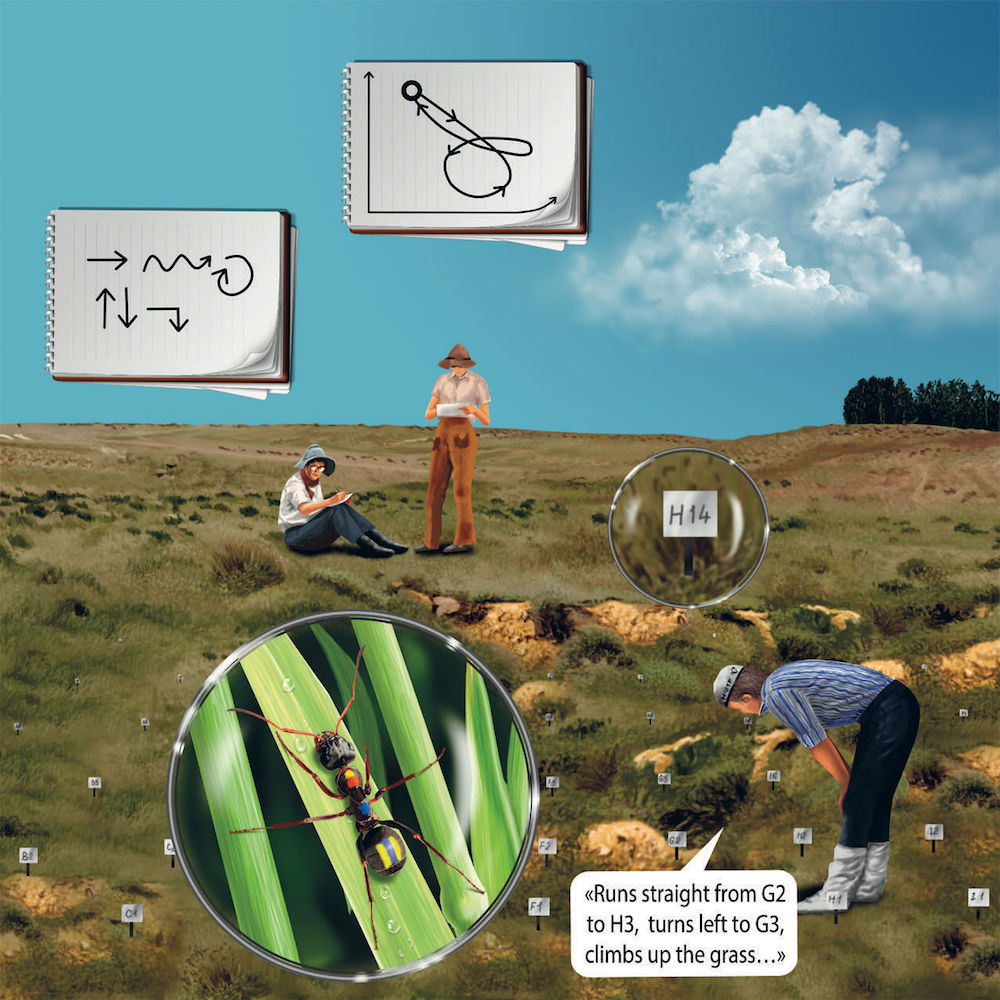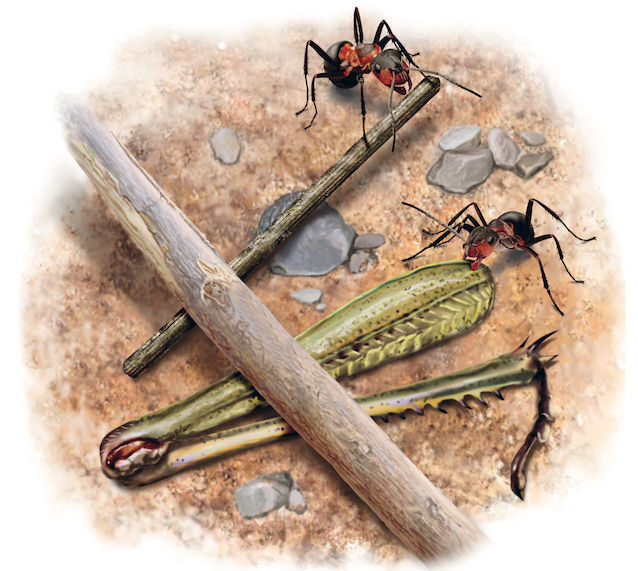Insect societies are often treated as “super-organisms” rather than groups of individuals. Within this philosophical view the concept of adaptive demography was developed by E. Wilson. According to this concept, an ant colony maintains a constant ratio of workers, sub-castes and ages. The question of “How?” remains without answer because nobody seems to seriously consider the importance of personal interaction, learning, decision-making and creativity amongst ants. We also cannot deny that in an ant colony a conflict of interest between cooperating ‘colleagues’ takes place and plays an important role in their social life. So, colony management provided by individuals in social insect societies is reality rather than fiction. At the same time, there is extraordinary evidence of remarkable capabilities of insects’ learning; their ability to count, to memorise and transmit information regarding the location of a trough containing food – possibly using Cartesian coordinates; and the flexible individual behaviour of social insects


Despite this evidence, the individuality of ants is a subject often studiously ignored by biologists: this is not because biologists do not like ants, but is instead because they do not want to turn their research into a logistical and moral nightmare. It is much simpler to deal with a colony of ants and look for the common, simple set of rules they all follow. It is also simpler because we do not have methods for dealing with extremely abundant data, where each ‘variable’ is unique and a lot of data are anomalies to be excluded from any regularity we find. However, by thinking of a phenomenon as an anomaly, we could easily miss essential information. It can’t be denied that studying individual ants presents us with difficulties. But now let’s talk about the most exciting part of our research – the scene of life, where each ant is an actor.
We began the investigation with a detailed examination of the behaviour of individual ants. Our preliminary hypothesis was that ants of different species will behave in different ways. Different species supposedly have different styles of management, so we expected that we would find a link between individual ant behaviour and a species dependent colony life-style. We studied 13 colonies of Formica uralensis Ruzsk., 9 colonies of Camponotus japonicus aterrimus Em, 3 colonies of C. saxatilis Ru- zsk., 21 colonies of F. cunicularia Glauca Ruzsk., 22 colonies of Cataglyphis aenescens Nyl., 12 colonies of F. picea Nyl., and 17 colonies of F. pratensis Retz.
So, what these insects do naturally in their everyday life?
We began with simple observations of the behaviour of ants in their natural environment. We’ve chosen a steppe landscape with rare grass cover to see the ants better. To prevent any damage, we might cause to the world of ants we wore socks or foot bindings (see the picture) and tried not to move much. One person was watching the ant and dictating all he or she saw to another person who was writing everything down. The third person was drawing the ant’s trajectory on a map, using specially designed signs (see the picture).
The first task was to distinguish the ants from each other. This was achieved by putting tiny dots of different coloured paint on their backs and abdomens. We were the first at that time (1976-1977) to start marking ants individually in a natural environment. A bit later, individual labelling was used in Japan58 to study F. yessensis Forel. ants. We watched an individual ant, drawing its movement trajectory on a feeding spot map, and recorded its daily activities (for example, cleaning its antennae or body, communicating with or avoiding other ants, climbing a stalk of grass, acting as a look-out, catching prey, traversing an obstacle, etc.).
As we were watching the labelled ants going about their every- day lives, we became aware that they all behaved very differently. Some ants were extremely active and often came home with food. Other ants preferred to wander around the same feeding territory showing no desire to move elsewhere to search for food. Some individuals appeared to be very ‘nervous’, constantly stopping and looking around, while others preferred to run very fast. We even noticed one apparently, opportunist ant that regularly hid for hours in the shadow of a stone or a blade of grass, before spotting an- other ant with food, grabbing the food and taking it home! It could be suggested that this was task partitioning, where ants divide their foraging activity into searching and transport, but the ant who had been ‘robbed’ never ceased trying to get her food back. She also appeared anxious afterwards, expressing all sorts of displacement activities (such as cleaning her antennae, spinning round, looking around), a well-known ethological phenomenon for reducing psychological stress. No other ants in the colony behaved like the opportunist ant, meaning that this behaviour was of her own social invention.
An ant’s life is full of situations that require decision-making and even creativity. Ants can make decisions that change the fundamental rules of their behaviour: for example, changing the way they search for food. Normally, F. uralensis follow the scent traces left by scouts to find a food source. We confused them by randomly rotating the plastic plane where they put these paths. After two or three unsuccessful attempts to follow the rotated scent trails, the ants abandoned this strategy, as it was clearly not working. They now found the food source using different methods of orientation. Individual ants displayed different reactions to this problem. One ant tried to rebuild the path many times, while another completely gave up on this food source. Another ant started to use our presence as a sign post for free food, whereas others stopped paying attention to scent traces and used their own visual orientation cues.
Adaptation in ant colonies is a much more complex process that includes reorganisation and even invention of new management styles, demonstrating double-loop adaptation.
The questions that will be answered by ants and discussed further in our blogs are:
1. How do ants provide cohesion for the colony?
2. What is ant management?
3. How does a single ant affect the life-style of the colony?
4. Can a colony change its management style to adapt to its extreme growth or extreme environmental changes?
Ants answers to these questions are presented in the book "Biomimetic Management"

 Posted by
Posted by




Enter the code in the box below: